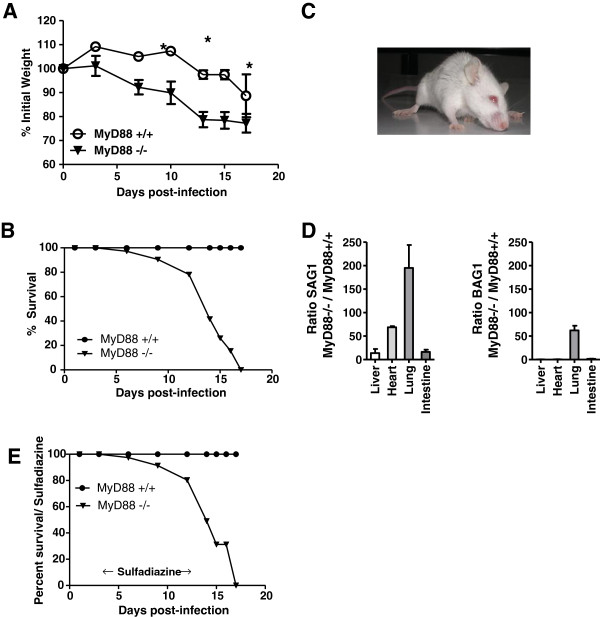Figure 1.
MyD88−/− BALB/c mice are highly susceptible to oral infection with T. gondii. (A) Loss of weight after oral infection with 80 cysts of the 76 K T. gondii strain. The total number of tested animals in each group is n = 7. This result is representative of three independent experiments. (B) Survival after oral infection with 80 cysts of the 76 K T. gondii strain. Data are expressed as percentage of cumulative survival during the experiment. The total number of tested animals in each group is n = 7. This result is representative of three independent experiments. (C) Picture of a MyD88−/− BALB/c mouse with neurotoxoplasmosis symptoms at 13 days postinfection displaying a tilted position. (D) Expression of bradyzoite (BAG1) and tachyzoite (SAG1) mRNA in the lungs, heart, liver and small intestine of MyD88−/− and MyD88+/+ BALB/c mice 13 days postinfection. The results are presented as a ratio of the expression level in MyD88−/− mice on the expression in MyD88+/+ mice. Results are representative of two different experiments. The total number of tested animals in each group are n = 7. (E) Survival after oral infection with 80 cysts of the 76 K T. gondii strain of sulfadiazine-treated mice. Mice were treated with sulfadiazine beginning 4 days after infection. The total number of tested animals in each group is n = 6. This result is representative of two independent experiments.

